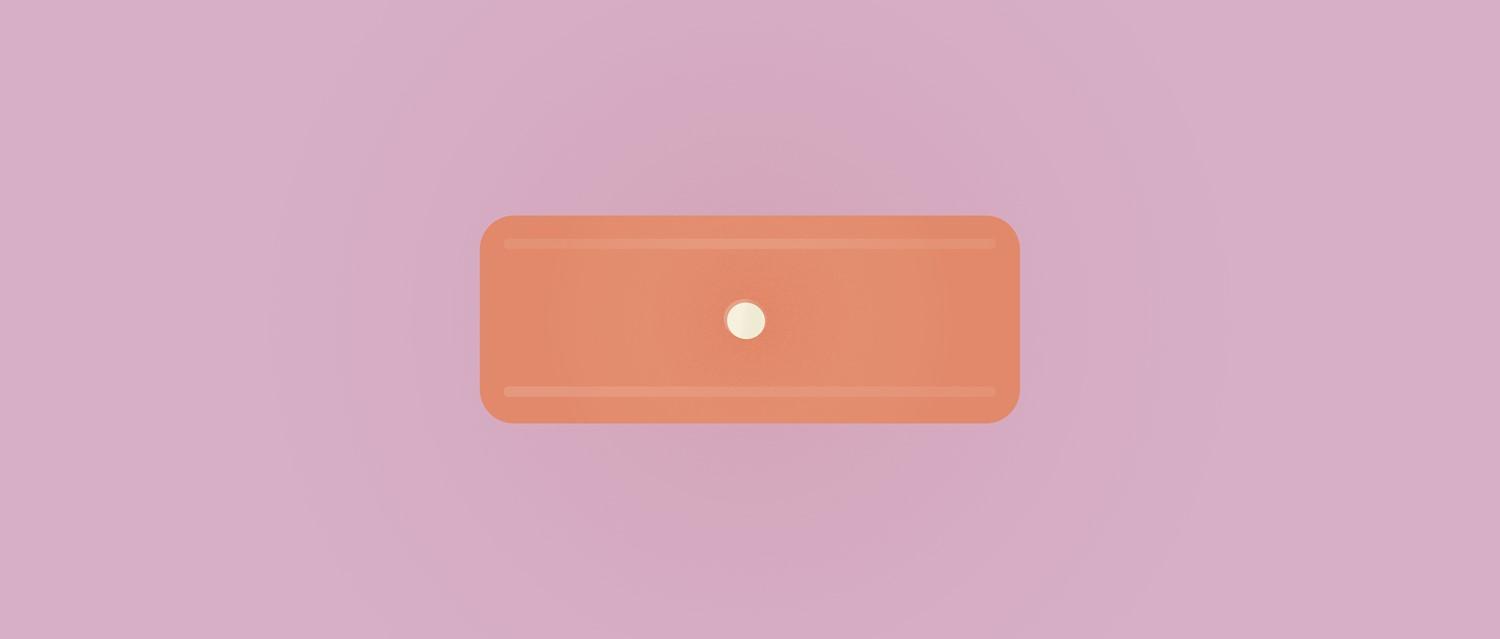
Does the contraceptive pill increase your risk of blood clots?
Peer reviewed by Dr Sarah Jarvis MBE, FRCGPAuthored by Allie AndersonOriginally published 10 May 2021
Meets Patient’s editorial guidelines
- DownloadDownload
- Share
- Language
- Discussion
In April, a small number of reports surfaced about rare blood clots occurring in people after they'd had the AstraZeneca COVID-19 vaccine. Before long, comparisons were drawn between clot risk associated with the vaccine and that of the contraceptive pill, to allay concerns about being vaccinated. But could these comparisons be causing unnecessary worry about side effects of contraception?
In this article:
Rollout of the UK's COVID-19 vaccination programme has been fast and efficient. At the time of writing, more than 34.5 million people had received their first dose and 15.5 million had had both doses. The government has pledged that all UK adults will have been offered a coronavirus vaccination by the end of July 2021, bringing its hoped-for overall uptake rate of 75% of the population closer to reality.
Any negative press surrounding the vaccines has the potential to derail this progress and put people at greater risk of contracting and falling seriously ill with COVID-19. Therefore, it's important to give context to adverse events that make the headlines.
To that end, Professor Adam Finn of the Joint Committee on Vaccination and Immunisation (JCVI) appeared on television and stated that the risk of blood clots occurring in individuals who take the contraceptive pill are "very much higher" than in people who have received the AstraZeneca vaccine.
Dr Anne Connolly, a Bradford GP who specialises in women's health, highlights that such comparisons could have significant social and public health consequences. "I have to say that every time the clot risk is discussed in relation to the pill my heart sinks," she comments. "I remember back to the mid-1990s when the 'pill scare' then made women stop taking it, and the unplanned pregnancy and abortion rates went up."
In October 1995, the UK Committee on Safety of Medicines linked two oral contraceptive ingredients with a higher risk of blood clots. The surge in unplanned pregnancies and in terminations that followed came at an estimated cost of £21 million in maternity care and £46 million for abortion provision.
Continue reading below
Comparative risks
So, what are the comparative risks? The numbers of reported cases of vaccine-associated clots centred around a particular rare clot called cerebral venous sinus thrombosis (CVT) - overall, for about every 500,000 people given a dose of the AZ vaccine, one person developed CVT.
Unrelated to the vaccine, each year around one person in 1,000 develops a blood clot in the leg, called a deep vein thrombosis (DVT), and around one person in 1,200-1,300 gets a blood clot in the lung, called a pulmonary embolism (PE).
Put simply, the vaccine blood clot risk is much lower than the general risk of getting a blood clot. What's more, more than 1 in 6 people with COVID-19 who need hospital admission develop a blood clot in the form of DVT, PE etc. And the risk of the rare CVT is 8- to 10-fold higher among people catching COVID-19 than among those who are vaccinated.
What about the pill?
In terms of clotting and contraception, it's important to be clear about the types of contraceptive methods in question. First, it's inaccurate to call out 'the contraceptive pill', because not all pills are created equal.
The specific contraceptive methods in the spotlight are combined hormonal contraception (CHC), so called because they contain a combination of the hormones oestrogen and progestogen in different quantities. There are three types of CHC available in the UK: the combined oral contraceptive pill, the combined transdermal patch and the combined vaginal ring - more commonly known as the pill, the patch and the ring, respectively.
The main clotting risk factor in them all is the oestrogen component. So, the same risk is not present with forms of contraception that don't contain oestrogen, like the progestogen-only pill (also known as the mini-pill).
Continue reading below
What are the risks?
The clots associated with CHC are typically DVT in the leg. If picked up early enough they are very treatable. According to the Faculty of Sexual and Reproductive Health, the risk of a blood clot in individuals using a combined hormonal contraceptive is three times higher than the risk in people who don't use it.
This might sound like a significant jump, but in absolute terms, between five and 12 people in every 10,000 will get a blood clot while using CHC each year. Among people who don't use CHC, that figure is around two per 10,000.
However, determining the clotting risk in people using CHC is a complex business. Dr Connolly points out that doctors must assess each patient individually when considering different methods of contraception.
"As prescribers, we have to be careful to evaluate each individual, look at their personal characteristics and decide whether or not to prescribe something that might minimally increase their risk," she says.
Other confounding factors that could further increase the risk of a blood clot include:
Obesity - if you have a BMI of 35 or more.
Being over 35 and a smoker.
Having migraines with aura.
High blood pressure.
Having more than one risk factor for heart disease (such as smoking, high blood pressure, diabetes, obesity).
Circulatory problems.
A history of blood clots or cardiovascular disease.
Prolonged immobility, such as being bed-bound for a long period of time after an operation.
Taking particular medications.
A family history of certain conditions or medical problems.
A number of long-term conditions.
"It's a case of balancing the benefits of contraception with the potential risks of not taking it," Dr Connolly adds.
Calculated risks
People use contraceptives for a number of reasons, including to regulate their periods, to help balance their moods, to reduce acne and to eliminate menstrual cramps. Of course, most people who take CHC do so to stop them getting pregnant - and pregnancy itself entails a far higher blood clot risk than that associated with combined hormonal contraceptives.
If you're planning on starting a new method of contraception, your GP or practice nurse will discuss your options with you and run through the possible side effects. If your individual risk of side effects - including blood clots - outweighs the benefits of a particular medication, there are alternatives you can try.
It's also important to watch out for signs of DVT, which include:
Red or dark skin in the leg.
The area feeling warm or hot.
Swelling.
Throbbing pain or cramping.
Swollen and sore veins.
Rarely, these symptoms might affect the arm or stomach, if that's where a clot has formed. If you experience these symptoms, you should see your GP urgently or call NHS 111.
"If you can pick up a blood clot in a leg early, the treatment prevents a consequence of that blood clot, which is part of it breaking off and travelling to the lung, called a pulmonary embolism. That is the danger," explains Dr Connolly. "The majority of DVT cases can be managed in outpatients and treated with blood thinners, so we can stop the serious complications."
Continue reading below
What to do if you're worried
The advice for people who are worried about their risk of blood clots is simple: consult your GP, practice nurse or pharmacist, who can discuss the risks with you. But do not stop using your normal method of contraception in the meantime, even if you're invited to have your COVID-19 vaccination.
Information and resources are also available to help you decide which method of contraception is best for you, like Contraception Choices and Sexwise, which is run by sexual health charity FPA.
Patient picks for Contraception

Sexual health
What to expect when you take the morning after pill
The morning after pill has been in the news over the past year, with discussion around access and cost hitting the headlines. We uncover the facts about emergency contraception, and look at what to expect after you take it.
by Sally Turner

Sexual health
Will we ever have a male contraceptive pill?
Could we soon have a male version of the pill? For many people, unsatisfied with current modes of contraception, the prospect probably sounds too good to be true.
by Abi Millar
Continue reading below
Article history
The information on this page is peer reviewed by qualified clinicians.
10 May 2021 | Originally published
Authored by:
Allie AndersonPeer reviewed by
Dr Sarah Jarvis MBE, FRCGP

Ask, share, connect.
Browse discussions, ask questions, and share experiences across hundreds of health topics.

Feeling unwell?
Assess your symptoms online for free
Sign up to the Patient newsletter
Your weekly dose of clear, trustworthy health advice - written to help you feel informed, confident and in control.
By subscribing you accept our Privacy Policy. You can unsubscribe at any time. We never sell your data.